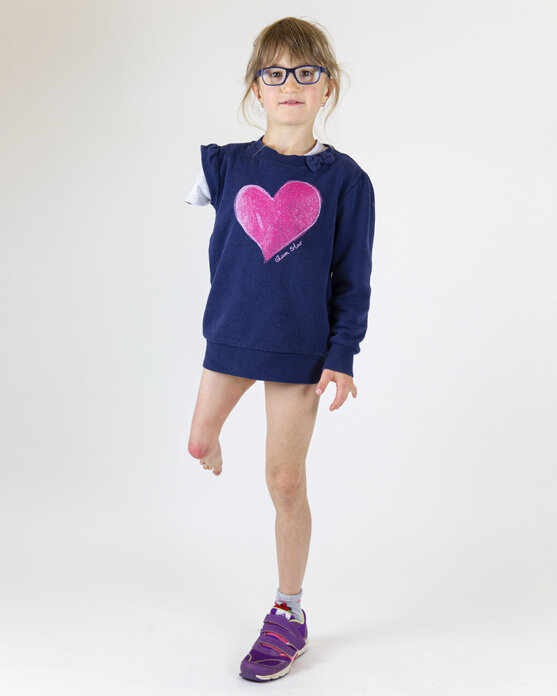The shin bone is completely or partially missing
What are tibial defects?
Tibial defects are characterized by total or partial absence of the tibia (shin bone). Unlike fibular hemimelia, tibial defects can have genetic links. Tibial defects can also be accompanied by defects of the foot and thigh.
Tibial defects range from partial absence of the bone (i.e., tibial hypoplasia) to complete absence of the bone (i.e., tibial aplasia). In some cases, the knee can also be affected in differing degrees. Tibial hypoplasia is typically accompanied by knee joint dysplasia. In cases where the tibia is completely missing, there is no functional knee joint because the distal segment of the joint is missing. Tibial defects are also accompanied by poorly developed leg musculature.

This device compensates for the leg length deficit and provides corrective support.
Standbein e.V. is a non-profit self-help group for people with PFFD, fibular or tibial defects, as well as their families.
Make an appointment over the phone or send us a message!
Sample treatment

Unilateral femoral hypoplasia.

Caring for children and adolescents with tibial defects is part of our daily work. Contrary to some assumptions, aplasia can also be treated very well with orthoprostheses. There is hardly any patient that we can't get back up and running.
The Orthopedic Children’s Clinic in Aschau is one of the largest specialist clinics for pediatric orthopedics in Central Europe.
When it comes to orthopedic treatment for infants and children, it is extremely important for all parties to pull together: parents, doctors, technicians and therapists.
Physiotherapists support the individual care of our little patients at our headquarters and all of our branches.


